Increased hippocampal excitability and impaired spatial memory function in mice lacking VGLUT2 selectively in neurons defined by tyrosine hydroxylase promoter activity
- PMID: 24802380
- PMCID: PMC4481332
- DOI: 10.1007/s00429-014-0778-9
Increased hippocampal excitability and impaired spatial memory function in mice lacking VGLUT2 selectively in neurons defined by tyrosine hydroxylase promoter activity
Abstract
Three populations of neurons expressing the vesicular glutamate transporter 2 (Vglut2) were recently described in the A10 area of the mouse midbrain, of which two populations were shown to express the gene encoding, the rate-limiting enzyme for catecholamine synthesis, tyrosine hydroxylase (TH).One of these populations ("TH-Vglut2 Class1") also expressed the dopamine transporter (DAT) gene while one did not ("TH-Vglut2 Class2"), and the remaining population did not express TH at all ("Vglut2-only"). TH is known to be expressed by a promoter which shows two phases of activation, a transient one early during embryonal development, and a later one which gives rise to stable endogenous expression of the TH gene. The transient phase is, however, not specific to catecholaminergic neurons, a feature taken to advantage here as it enabled Vglut2 gene targeting within all three A10 populations expressing this gene, thus creating a new conditional knockout. These knockout mice showed impairment in spatial memory function. Electrophysiological analyses revealed a profound alteration of oscillatory activity in the CA3 region of the hippocampus. In addition to identifying a novel role for Vglut2 in hippocampus function, this study points to the need for improved genetic tools for targeting of the diversity of subpopulations of the A10 area.
Figures
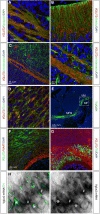
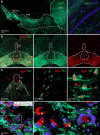
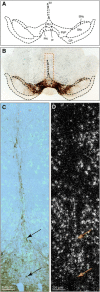

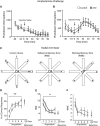
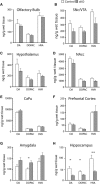


Similar articles
-
Heterogeneous composition of dopamine neurons of the rat A10 region: molecular evidence for diverse signaling properties.Brain Struct Funct. 2013 Sep;218(5):1159-76. doi: 10.1007/s00429-012-0452-z. Epub 2012 Aug 29. Brain Struct Funct. 2013. PMID: 22926514
-
Mesocorticolimbic glutamatergic pathway.J Neurosci. 2011 Jun 8;31(23):8476-90. doi: 10.1523/JNEUROSCI.1598-11.2011. J Neurosci. 2011. PMID: 21653852 Free PMC article.
-
Particular subpopulations of midbrain and hypothalamic dopamine neurons express vesicular glutamate transporter 2 in the rat brain.J Comp Neurol. 2006 Oct 10;498(5):581-92. doi: 10.1002/cne.21054. J Comp Neurol. 2006. PMID: 16917821
-
Ventral tegmental area glutamate neurons: electrophysiological properties and projections.J Neurosci. 2012 Oct 24;32(43):15076-85. doi: 10.1523/JNEUROSCI.3128-12.2012. J Neurosci. 2012. PMID: 23100428 Free PMC article.
-
Distributions of hypothalamic neuron populations coexpressing tyrosine hydroxylase and the vesicular GABA transporter in the mouse.J Comp Neurol. 2020 Jul 15;528(11):1833-1855. doi: 10.1002/cne.24857. Epub 2020 Jan 24. J Comp Neurol. 2020. PMID: 31950494 Free PMC article.
Cited by
-
Ventral tegmental area glutamate neurons co-release GABA and promote positive reinforcement.Nat Commun. 2016 Dec 15;7:13697. doi: 10.1038/ncomms13697. Nat Commun. 2016. PMID: 27976722 Free PMC article.
-
Targeting VGLUT2 in Mature Dopamine Neurons Decreases Mesoaccumbal Glutamatergic Transmission and Identifies a Role for Glutamate Co-release in Synaptic Plasticity by Increasing Baseline AMPA/NMDA Ratio.Front Neural Circuits. 2018 Aug 29;12:64. doi: 10.3389/fncir.2018.00064. eCollection 2018. Front Neural Circuits. 2018. PMID: 30210305 Free PMC article.
-
Basal forebrain circuit for sleep-wake control.Nat Neurosci. 2015 Nov;18(11):1641-7. doi: 10.1038/nn.4143. Epub 2015 Oct 12. Nat Neurosci. 2015. PMID: 26457552 Free PMC article.
-
Relevance of interactions between dopamine and glutamate neurotransmission in schizophrenia.Mol Psychiatry. 2022 Sep;27(9):3583-3591. doi: 10.1038/s41380-022-01649-w. Epub 2022 Jun 10. Mol Psychiatry. 2022. PMID: 35681081 Free PMC article. Review.
-
Targeted deletion of Vglut2 expression in the embryonal telencephalon promotes an anxiolytic phenotype of the adult mouse.Ups J Med Sci. 2015;120(3):144-56. doi: 10.3109/03009734.2015.1032454. Epub 2015 Apr 9. Ups J Med Sci. 2015. PMID: 25857802 Free PMC article.
References
-
- Alsiö J, Nordenankar K, Arvidsson E, Birgner C, Mahmoudi S, Halbout B, Smith C, Fortin GM, Olson L, Descarries L, Trudeau LE, Kullander K, Levesque D, Wallén-Mackenzie Å. Enhanced sucrose and cocaine self-administration and cue-induced drug seeking after loss of VGLUT2 in midbrain dopamine neurons in mice. J Neurosci. 2011;31(35):12593–12603. doi: 10.1523/JNEUROSCI.2397-11.2011. - DOI - PMC - PubMed
-
- Birgner C, Nordenankar K, Lundblad M, Mendez JA, Smith C, le Greves M, Galter D, Olson L, Fredriksson A, Trudeau LE, Kullander K, Wallén-Mackenzie Å. VGLUT2 in dopamine neurons is required for psychostimulant-induced behavioral activation. Proc Natl Acad Sci U S A. 2010;107(1):389–394. doi: 10.1073/pnas.0910986107. - DOI - PMC - PubMed
-
- Fauchey V, Jaber M, Caron MG, Bloch B, Le Moine C. Differential regulation of the dopamine D1, D2 and D3 receptor gene expression and changes in the phenotype of the striatal neurons in mice lacking the dopamine transporter. Eur J Neurosci. 2000;12(1):19–26. doi: 10.1046/j.1460-9568.2000.00876.x. - DOI - PubMed
Publication types
MeSH terms
Substances
Grants and funding
LinkOut - more resources
Full Text Sources
Other Literature Sources
Medical
Molecular Biology Databases
Miscellaneous

